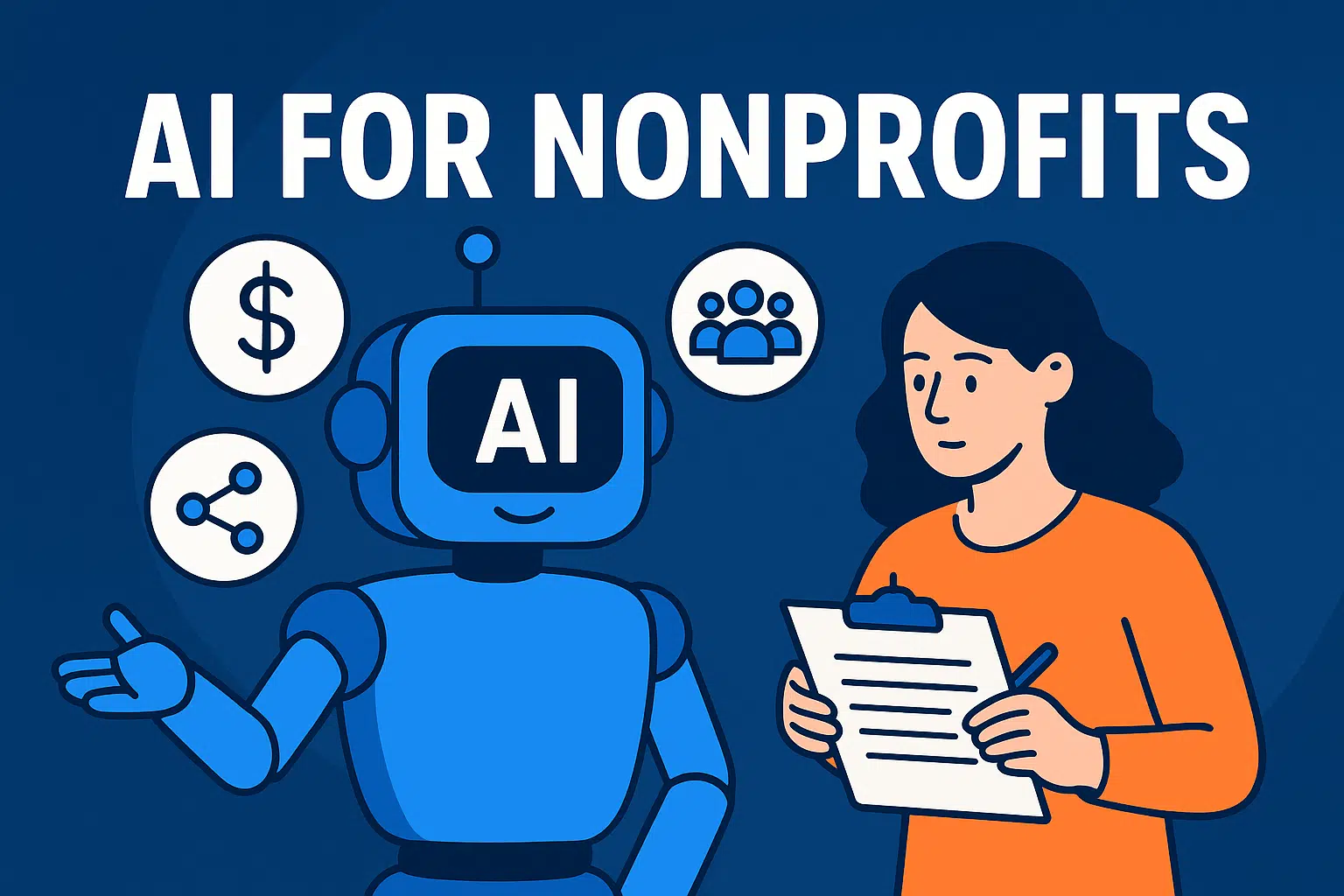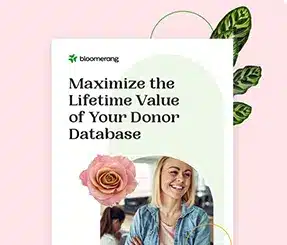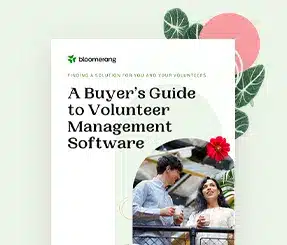AI Tools for Nonprofits: A Complete Guide in 2025


Full Platform Overview Chat With Us



Full Platform Overview Chat With Us




Running a nonprofit is not for the faint of heart. From fundraising to volunteer management to community building, the list of responsibilities are vast and demanding. And with tight timelines and even tighter budgets, many organizations are looking for ways to increase efficiency without breaking the bank. One solution that you’ve no doubt seen skyrocket in popularity lately is AI.
If your nonprofit has been considering hopping on the bandwagon or even just dipping your toe into the expansive world of AI, you’re in the right place! Consider this guide your one-stop shop for everything you need to know about AI for nonprofits.
While every organization, no matter its sector, has its challenges, nonprofits carry a unique burden: when they’re buried in the day-to-day logistics, their ability to focus on their mission takes a backseat. And that mission is the whole point. From tracking donor engagement and identifying new prospects to drafting grant proposals and creating content, AI can take on many of the tasks that can typically drain a staff’s time and capacity.
Before diving into specific AI tools, let’s break down two of the most widely used types of artificial intelligence in the nonprofit space: generative AI and predictive AI. Knowing the difference between these models will help your organization better match the right tools to the right tasks. Whether you’re hoping to use AI for fundraising, to streamline internal processes, or improve donor outreach, understanding how these two types of AI work will give you the context you need to use them effectively and responsibly.
As the name plainly states, generative AI generates content. With the rise of chatbots like Google Gemini and ChatGPT, generative AI has been a hot topic for a while now, but how exactly does it work? In a nutshell, generative AI identifies patterns based on the massive data set it’s trained on to then create new content.
If your nonprofit is looking for help with social media content, marketing emails, or grant proposals, generative AI can be a great tool. To put it simply, if content creation is a pain point for your organization, generative AI may just be your new best friend.
Unlike generative AI, Predictive AI is trained on more targeted information. It’s all about delving into past data sets to forecast future outcomes. So, if your nonprofit needs assistance with engagement analytics or donor prospecting, predictive AI is a great asset to have in your toolbelt.
While generative AI is about creating, predictive AI is about anticipating. In an ideal world, your nonprofit would utilize both models in tandem, with predictive AI helping to inform your efforts and generative AI assisting in the execution of your strategy.
Now that’s all well and good, but finding these nifty predictive and generative tools (especially the right ones) can be an overwhelming experience. A quick Google search will populate countless services proclaiming their artificial intelligence is the one you need in your organization, making the entire process of finding the software that’s right for you incredibly tedious and time consuming. So, instead of spending countless hours scouring through different websites and giving yourself a headache, let’s cut through the noise and simplify what the best AI tools for nonprofits are.
One of the biggest perks of Gemini is how naturally it integrates into Google Workspace. So, if you’re using Google Docs, Gmail, or Sheets, Gemini is easy to use and requires minimal (if any) training. The free version can help streamline content creation and daily tasks.
What we like about it:
Like Gemini, the free version of ChatGPT is great for drafting content, brainstorming ideas, writing email templates, or answering research questions. It’s intuitive, fast, and easy to use, even for non-technical users.
What we like about it:
Buffer’s free plan simplifies social media management by suggesting content and scheduling posts. It also offers social media analytics so your team can better understand how your content strategy is performing.
What we like about it:
Canva offers their premium features at no cost for nonprofit organizations. Their Magic Studio suite includes AI tools that assist with graphic design, social media content, and cohesive branding.
What we like about it:
Grammarly’s free plan corrects grammar and spelling, and its AI writing prompts can help staff create clearer, more professional copy. It’s the perfect tool if you feel your writing needs that little extra boost.
What we like about it:
This AI assistant helps nonprofits craft donor-centric communications and fundraising appeals, streamlining outreach and saving staff time. It’s also embedded within Bloomerang’s CRM, so if you’re already using our platform, you’re good to go!
What we like about it:
Raise, Gravyty’s AI tool, helps nonprofits engage with donors more effectively by identifying the best outreach opportunities and generating tailored messaging automatically. It’s also a great platform for building up your donor community.
What we like about it:
What to look out for:
DonorSearch AI uses predictive analytics to highlight who is most likely to give to your nonprofit and the best way to engage them within a 12-month timeframe. If you’re looking for high-level insights into prospective donors, ensuring your outreach efforts are not only efficient but effective, this could be the tool for you.
What we like about it:
Fundraise Up’s AI uses behavioral data to adjust ask amounts and craft personalized touch points across the donation experience to increase recurring donors and reduce cancellations. Bonus points for determining whether or not a donor is likely to cover transaction costs.
What we like about it:
Grantable uses AI to simplify the grant writing process by helping you draft responses, organize proposals, and reuse content efficiently. Great for busy teams applying for multiple grants that are feeling overwhelmed and/or disorganized.
What we like about it:
While primarily a grant research platform, Instrumentl’s AI tools can assist with crafting stronger, faster, and more successful applications by pulling on its insights from nearly 1,000 funders. It also offers ready-made application forms and builds out any they may be missing.
What we like about it:
FreeWill’s Grant Assistant streamlines the entire grant proposal process by crafting proposals tailored specifically to your organization. It essentially becomes an expert on your organization, its cause, and the category’s funding opportunities.
What we like about it:
With the paid version of ChatGPT, you’ll gain access to faster performance and advanced capabilities (unlimited use of ChatGPT-4o, higher limits on file uploads, etc). If you’re wanting a more specialized approach to your grant proposals, it may be worth upgrading.
What we like about it:
While the free version of Grammarly is amazing all on its own, Grammarly’s Pro plan is a great step up if you’re wanting some extra help. With tone and clarity enhancements, Grammarly ensures you’re getting your exact point across. This can be a great tool when refining grant applications and ensuring they’re easy to read.
What we like about it:
Buffer’s AI features help your nonprofit stay visible in the vast social media landscape by generating ideas for your posting schedule and optimizing your content for each social media platform. Like Grammarly, it can also tailor your writing to fit a specific tone.
What we like about it:
Lately uses AI to turn long-form content (like blog posts or videos) into dozens of short-form social posts, helping nonprofits maintain consistent online visibility. Like some of the other tools on this list, it’s also capable of crafting personalized copy for your target audience.
What we like about it:
Jasper is a marketing-focused AI writing tool that automates workflows across all marketing channels. It can be especially useful for fundraising drives and events. From generating copy for websites to blog posts to ads, it’s a versatile tool that every marketer can use.
What we like about it:
Canva’s Magic Studio generates images, animations, and captions for social media, while their design interface offers pre-made templates for easy graphic creation. It’s a must-have tool for those of us without a background in graphic design.
What we like about it:
Gemini Advanced stands out for helping with both visual content and campaign strategy in tools like Google Slides and Sheets. With Gemini Advanced in your toolbelt, you can look forward to more impactful campaigns, streamlined workflows, and a more collaborative creative process.
What we like about it:
Power BI’s Copilot helps nonprofits gain deeper insight from their data, all without the need of a data analyst. With Copilot, nonprofits can translate overwhelming amounts of data into bite-sized, easily digestible pieces, allowing them to make more informed decisions.
What we like about it:
Integrated into the Salesforce CRM, Einstein AI uses predictive insights taken from your donor data to identify at-risk donors and personalize engagement with them. It’s also great for pinpointing the most promising giving opportunities and forecasting future donation trends.
What we like about it:
Otter.ai provides real-time transcriptions and AI-generated meeting summaries, ideal for nonprofit board meetings, trainings, or interviews. With Otter working for you, you’ll not only save time, but you’ll also ensure everyone in your nonprofit is up-to-date on the information that pertains to them.
What we like about it:
Zapier uses AI to connect disparate applications like CRMs, online forms, and email, allowing for automatically updating data entries and facilitating timely follow up interactions. It’s a central hub for all your tools to interact with one another, essentially nixing the middle man so you can focus on more important tasks.
What we like about it:
Notion’s AI assistant is a perfect solution for nonprofits wanting to enhance their internal productivity and streamline operations. Whether you need to draft notes, summarize project plans, or automate knowledge management, Notion AI is a powerful internal productivity tool.
What we like about it:
Now that we’ve covered some of the best tools on the market, it’s time to get really clear on the pain points your organization is facing. If you have grant proposals down to a science, you probably don’t need to invest in a program like Grantable. But if your social media is all over the place (or nonexistent) it might be time to check out something like Buffer. Clarifying your pain points will be your guiding star in selecting what category of AI is for you.
Once you’ve done that, now comes the fun of looking at what your organization can afford. As made clear in our list, there are plenty of free tools that are worth getting started with, especially if you’re brand new to using AI. However, free tools are limited in their capabilities, and if you feel you’ve reached the limit of what they can offer, it’s probably time to invest.
Thankfully, many of the tools listed above have special promotions for nonprofits! Here are the services that offer discounts for organizations like yours.
Now that you know what tool works best for your organization from both a pain point and financial perspective, it’s best to narrow down your options by taking a look at what easily integrates with your existing tools. For example, if you’re already using Bloomerang as your CRM, it would probably make the most sense to make use of its AI Content Assistant rather than learning an entirely new system for your fundraising needs.
Finally, it’s time to take your new tool for a test drive! See how it feels, take the time to learn all the bells and whistles, and then, when you’re ready, scale it to your needs.
We’ve covered a lot in this guide already, but there’s one thing that we cannot forget to discuss—using AI in a responsible and ethical manner. The world of artificial intelligence is evolving rapidly, and while all the tools we’ve discussed are exciting and no doubt beneficial, AI isn’t without its risks. If used improperly, AI can put your organization at risk for data breaches, legal noncompliance, and the spread of misinformation and unintentional biases.
As intense as all that sounds, as long as your nonprofit takes the steps necessary to responsibly use AI, there’s nothing to worry about. But, what exactly does that look like?
For one, proper training is key. Before rolling out the red carpet for your new savvy tool and letting staff run loose, be sure everyone who will be using your tool of choice understands that, while AI supports tasks, it should not be used blindly. Without oversight, AI can lead to sharing incorrect or harmful messaging—two things that could be detrimental to your mission. It’s vital to remember that AI is not a substitute for human judgment, empathy, or context.
It’s also important to conduct regular security checks. Without proper guardrails in place, sensitive donor information may be susceptible to cyberattacks or data breaches. This is also where it’s crucial to thoroughly vet whatever vendor you choose to work with. You’ll want to make sure their platforms are secure.
And don’t forget, transparency is everything! Stakeholders should understand how you’re using AI, and be sure to give donors the opportunity to consent to their data being used in an AI system. Don’t shy away from informing them of how you’ll keep their data private and secure.
While AI Tools for Nonprofits came on the scene fast, they are here to stay. Although relatively new in the grand scheme of technology, it’s already become a vital tool for organizations trying to do more with less. So, whether you’re looking to use AI for fundraising campaigns, improve donor engagement, automate internal processes, or finally tackle that mountain of data, there’s a solution that fits both your goals and your budget. With so many options on the market today, nonprofits of all sizes can start small, scale smart, and make a real impact with the help of artificial intelligence.

Comments